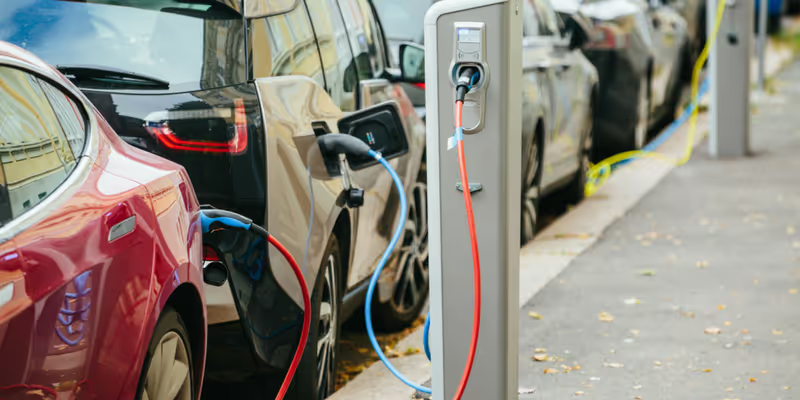Decoding the factors driving India’s burgeoning e-mobility sector
The electric vehicle ecosystem, integrated with shared and connected mobility, will not be a substitute but an alternative to existing forms of mobility.
How is India preparing for the shift in mobility? Well, there are many answers to that. The government is allocating funds towards products, infrastructure, and services. Car manufacturers and startups are offering hybrid and electric vehicle options to consumers and corporations. Niti Aayog and EESL are coming out with tenders. PSUs and component manufacturers are concentrating their efforts towards battery technology and so on.
But from my perspective, India’s electric dream can come true only when the entire mobility ecosystem transforms on the lines of electric, shared, and connected transportation. The task of shifting to sustainable sources of energy is dependent on a majority of elements that need to be synchronized to be able to map out a way to break the existing barriers and create new market space.

The way ahead for e-mobility
Stakeholders of the automotive value chain need to come together to eliminate, reduce, raise, and create a wide number of factors to extrapolate a new ecosystem out of the existing one. Looking across buyer groups, time, and alternatives to plan products and solutions for the future mobility space is essential to achieve a correct blend of value with innovation.
Electrification will have to bring exclusive value to not only the environment but also to customers, governments, investors, and direct-indirect players in the auto arena as well. A holistic value proposal is key to drive confidence levels that are essential to propel investments, sales, and research.

What’s in it for the environment
About one-fifth part of the total air pollution in India is caused by vehicular pollution presently. Considering the growing trends in rural and urban consumption, by 2025, manufacturers in India will aim to produce around 65 million vehicles. Recognizing the implementation of stricter emission norms by 2020 as well as possible volumes of vehicles on road running on those norms, the share of pollution generated by vehicles would come up to one-fourth. Taking in account that an electric vehicle can reduce 25-30 percent carbon dioxide emissions presently and about 50-55 percent after 10 years, raising both emission standards as well as barriers to vehicles running on BS-3 and older versions seems essential.
Talking about consumers
150,000 people have lost their lives due to road accidents in India in 2018 so far. Safety tests from regulators have been displaying the poor performances of India’s top-selling cars for years, but to compete in India’s price-sensitive market, these tests have been ignored to a great extent. Also, the push towards e-mobility is growing with time, but the total cost of ownership hasn’t been equivalent to cars running on gasoline or diesel, leading to low pull from the market. To fabricate favourable outcomes, safety standards of vehicles and technical assistance systems to drivers need to be raised and TCO of EVs needs to reduced to avoid scepticism.
Benefit to the government
Investment for importing petroleum products has risen to around 2.5 percent of GDP. Due to geopolitical tensions and rising national consumption, this share is expected to increase in the next fiscal. Considering that this expenditure is almost equal to India’s current account deficit, balancing out payments and maintaining foreign exchange reserves will become difficult. Moreover, resources lost due to road congestion and improper planning of infrastructure cost India about $20 billion a year. To tackle loss of funds, dependency on fossil fuel imports needs to be reduced and an ecosystem of connected public transportation needs to be created.
Value for manufacturers
For e-mobility to become a success, manufacturers and investors need to be incentivised till the time EV volumes don’t come up to 27-29 percent of the total vehicle volumes. Presently EV sales make up to less than one percent of the total sales, and one of the biggest reasons for its inability to pick up is the lack of energy distribution channels, which are minuscule compared with petrol bunks. Also, due to technological barriers, an electric car in the market today would have about two-thirds of its components imported, which plays a big role in vehicle price. Moreover, increasing congestion and changing consumer aspirations and lifestyle is forcing manufacturers to redesign their business models.
To stay relevant and attain greater value, component imports need to be reduced. Government incentives and ridesharing and renting platforms need to be raised and energy infrastructure needs to be created.
The creation of a new aspect of mobility
Mobility-as-a-Service is bound to emerge when all these factors are optimized well. With this, Tier-I cities will become smart cities and Tier-II cities will start transforming to them. The formation of this ecosystem will, hence, not be a substitute but an alternative to the present transportation models. India as a country has an opportunity to transfigure itself. The solutions proposed by the West will not be very efficient due to the distinctive conditions prevailing in India. The nation will have to come up with its own solutions for its unique problems.
Pranav Jain is an Automobile Consultant.
(Disclaimer: The views and opinions expressed in this article are those of the author and do not necessarily reflect the views of YourStory.)







